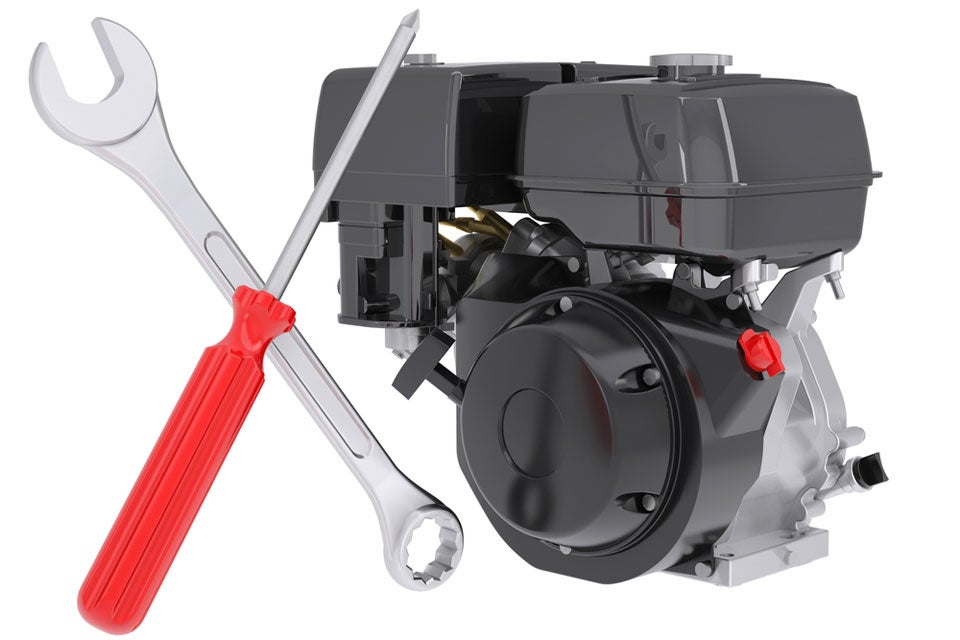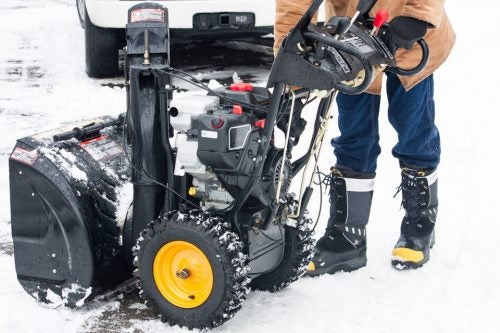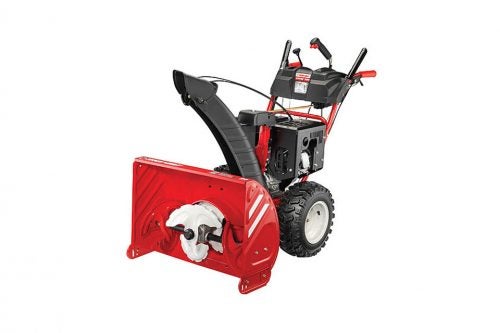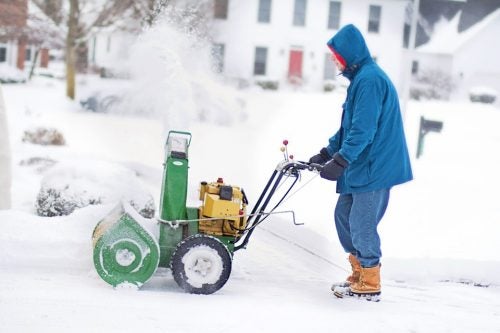Every snowblower will eventually need some maintenance, but you don’t have to be intimidated by snowblower repair. We are here to help.
There are basically two times of the year when dealing with a snowblower repair is not going to be much fun at all – right before winter hits, or during winter. Unfortunately, those seem to be the times of year when we realize we’re going to need a repair. You have two options. You can pony up the money to take it into a shop and run the risk of it taking a while as the mechanic works through the backlog of stuff awaiting repair, and/or having the repair cost almost as much as the snowblower did in the first place. The other option is to roll up the sleeves and fix it yourself. That shouldn’t be as scary of a proposition as you might think.
The Engine
Fixing a small engine is something that most people can do, even if you think you have no mechanical ability. First you need to look for something that is obvious. Is there a broken part that you can see? If it won’t start, it’s time to examine the things that an engine needs to operate.
Fuel
I’m not going to insult you by asking if the fuel tank has anything in it. You should take a look inside to make sure there is nothing in the tank that can clog it up. Check the fuel line next, to see if fuel is making it to the carburetor. One of the biggest culprits of a motor not starting in the fall is a clogged fuel line. Thankfully it’s easy to replace.
Shop For Snowblower Fuel Lines
Today’s ethanol-added fuels have a tendency to clog because the cellulose in ethanol settles faster than petroleum and creates a serious clog. Fuel line is cheap, though, so an easy fix is to replace the line, and be sure to add fuel additive in the spring.
If fuel is getting to the carburetor, but the engine still acts like it’s out of gas, check the carb. It can also get clogged by the same thing that clogs the fuel line. The floats and valves inside the carb can get clogged shut and create a situation where the machine gets no gas to the actual engine. You can take it apart and clean it, which is fairly easy to do, but you have to put it back together in the exact same way to get it to work again. An easier way to go is to simply install a new carb. They aren’t that expensive and if you’re not used to working on one, there are less headaches involved.
Shop For Snowblower Carburetors
Spark
If your motor has fuel, the next think to check off your snowblower repair list is spark. Pull the plug first and check the condition. You’ll need a spark plug wrench , but those are common. If the spark plug is dark, smell it. If it smells burnt, or is very dark and greasy-feeling, replace it.
With a fresh spark plug in the snowblower, try starting it. If it acts as though there is no spark still, pull the plug out again, and plug it back into the sparkplug wire. Turn it over again and see if there is a visible spark. Be careful! If you smell gas, don’t try this. I always throw a rag over the sparkplug hole when I do this. If there is no spark, you may need to replace the wire or plug cap.
If it goes much past that, you’re bound to get into ignition issues, and it may be time to tap out and call the snowblower repair shop.
Compression
The last thing an engine needs to run is compression. If the motor will turn over, listen to it to see if there is any obvious sound of an air leak. Chances are, you won’t hear one, so the next step is a compression tester.
Look in your owner’s manual for the proper compression for your engine. The bad news here, is that if you’ve got a loss of compression, and don’t feel comfortable rebuilding a small engine, it’s time to call that mechanic again. Of course, you can always just replace the whole engine…
Other Issues
When it comes to snowblower repair, it may not be an engine issue you’re dealing with. When something else goes wrong with your snowblower, such as the chute not pivoting, or the auger’s not working right, start with the obvious. Look for all of the metal-on-metal contact areas. Spray these areas with penetrating oil, and keep them oiled.
You may need to replace the drive belts. If they are frayed, or broken, replacement is easy. If it is just worn and slipping, find the tensioner and back it as far down as you can before it comes too loose, or off. This will make getting the new belt on much easier.
Shop For Snowblower Drive Belts
Your Auger Isn’t Working
If your engine is running but the auger isn’t spinning, you probably need to replace the shear pins. This is one of the most common snowblower repair procedures. It’s a design feature that your auger spins on an axle and if there is too much force stopping the auger from spinning, the specially-designed pins that hold it on the axle (usually two) will snap off and save your snowblower. Find the right size for your machine and have some spares on hand, especially when you’re expecting a lot of wet, heavy snow.
Once you get past these few basic areas, and your snowblower still isn’t working, it is probably time to consult a mechanic. You can always hit it with a hammer. That’s only ever worked for me once. The other times, it didn’t, but it did feel good. My mechanic certainly appreciated it.
We are committed to finding, researching, and recommending the best products. We earn commissions from purchases you make using the retail links in our product reviews. Learn more about how this works.



